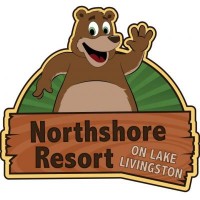Web design: 8 best practices to follow for better navigation
Anyone who visits a site needs to know where they are and where they are going. To avoid scare him away with a navigation route that is too fuzzy or too complicated, it is advisable to respect a few rules.
Any user who visits a site wants to easily navigate through the various content. This means he must know where he is and where he is going.
If the navigation path is too blurry or too complicated, there is a good chance that the user will leave the website since he will not be able to find the information sought quickly.
To keep your users on your site, the navigation elements should not be overlooked. Here are the best practices to follow ...
1. Determine
the organization of your menu from the start
From the start of your project you must determine the different pages that will make up your website. It requires thinking about the information and features you will be offering.
Then comes the prioritization of this information. You can build a diagram to highlight the different levels of navigation.
In building your tree structure , be sure to respect the following rules:
Do not put more than 7 items at the risk of losing your users and complicating the memorization of your menu
Rank your sections in order of importance: the sections at the beginning and at the end of your menu are more eye-catching
2. Be
descriptive
The words you use for the items on your menu and in your call-to-action must be carefully chosen. Before even clicking, the user should know what kind of information they are going to find on the next page.
Your statements must therefore be clear and precise .
Do not hesitate to choose longer statements, based on descriptive key words or phrases. The benefits relate to SEO and user experience:
Search engines will more easily understand the subjects / themes on which you want to position yourself
Visitors will be able to go to pages that really meet their expectations and find what they are looking for more quickly
3. Don't reinvent
web design
You can express your creativity in your visuals, your written content, in the arrangement of your elements or in the typography . But not in the navigation elements.
In web design, and like everywhere else, there are conventions . These work because people are used to them. So don't change them unless your “new” navigation is more appropriate.
Here are
some existing conventions for navigation:
The logo is located on the top left or top center
The main navigation bar is located at the top of the screen (horizontal) or on the left (vertical)
The hamburger menu icon opens the menu if it is not visible (especially on mobile)
The navigation bar is responsive
4. Insert a
link on your logo
This is another convention when it comes to browsing a website.
Your logo is not only present to remind Internet users on which site they are. It must participate fully in the navigation, especially since it is located very close to your main menu.
When a user clicks on your logo, they should be taken to your home page .
5. Create a
suitable footer
So far we've focused on the top of your website, but navigation can also take place at the bottom of the page.
The footer is generally reserved for legal notices and is increasingly used to provide contact details and links to social networks.
But you might be wondering if this footer can be used to fill in a map of your site. The answer to this question depends on how much information you have online.
For e-commerce, for example, most Internet users expect to find additional information in the footer:
· After sales service
· Loyalty card
· Gift cards
· find a store
· Return of products and refund
· Terms of Sales
· Etc.
6. Choose a
fixed navigation bar
So-called “sticky” navigation corresponds to a main menu which remains at the top of the page and which is always visible, wherever the user is located.
This practice is ideal on one page sites since it allows Internet users to continue browsing easily, without having to go back to the top of the page.
Alternative
If your navigation bar is not fixed, add at least one button allowing you to return to the top of the page.
7. Indicate
where the visitor is
The users of your site should always know where they are located. For this, several solutions can be combined:
Use a color to highlight the section of the main menu where the user is located
Add breadcrumbs
Add a banner at the top of each page with the title of the latter
8. Use the
mega menu wisely
The mega menu is a large navigation panel that appears when you click or hover the mouse over an item in the main menu. This type of menu allows a user to see at a glance all the options and sub-pages that are hidden behind a statement.
The mega menu is therefore practical, but only when it is used correctly:
Recommend it on an ecommerce website design firm or any other site that has many categories or many services .Visually, prioritize the information by classifying it by category and / or by integrating explicit icons.



Comments